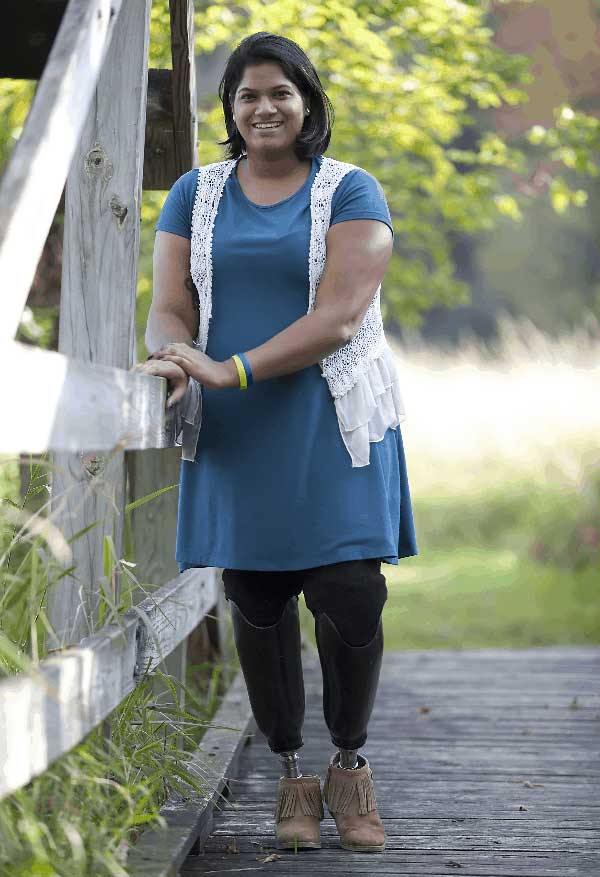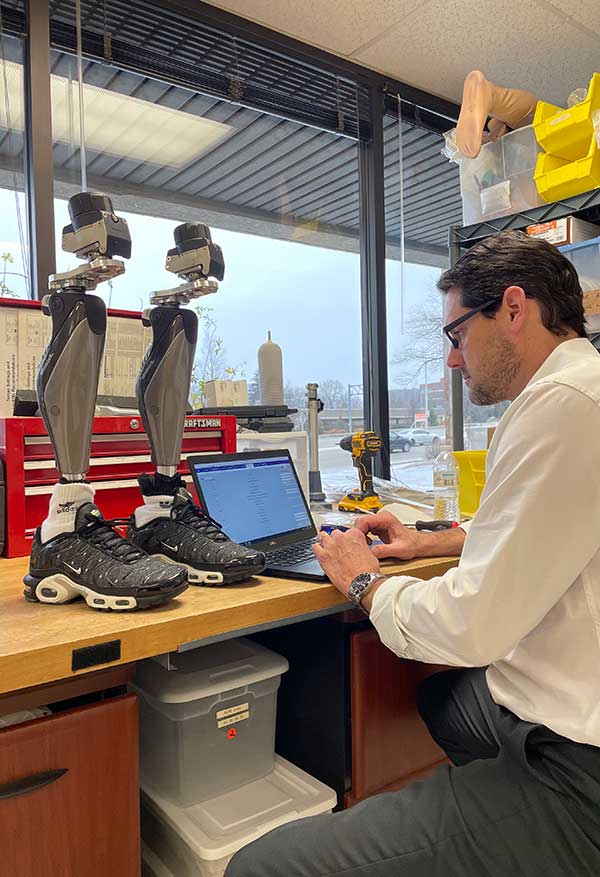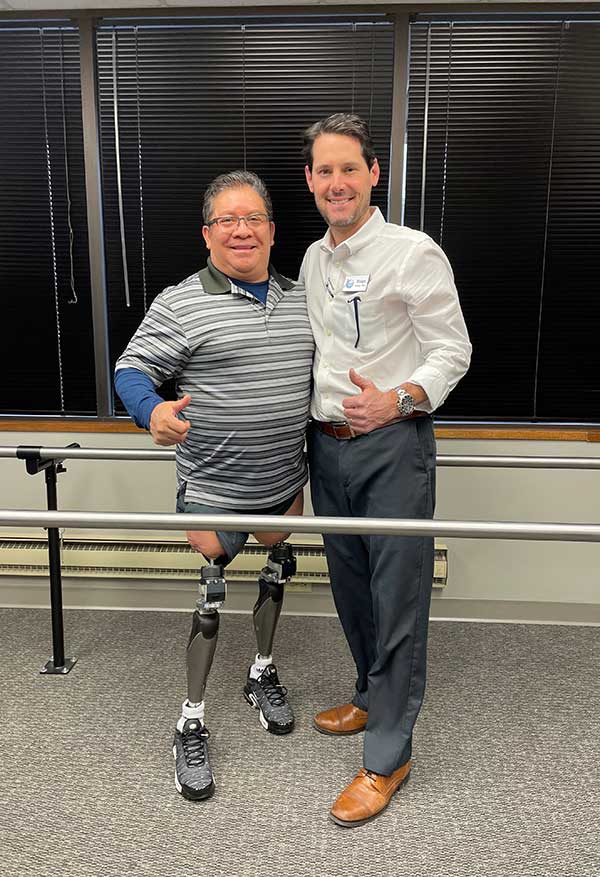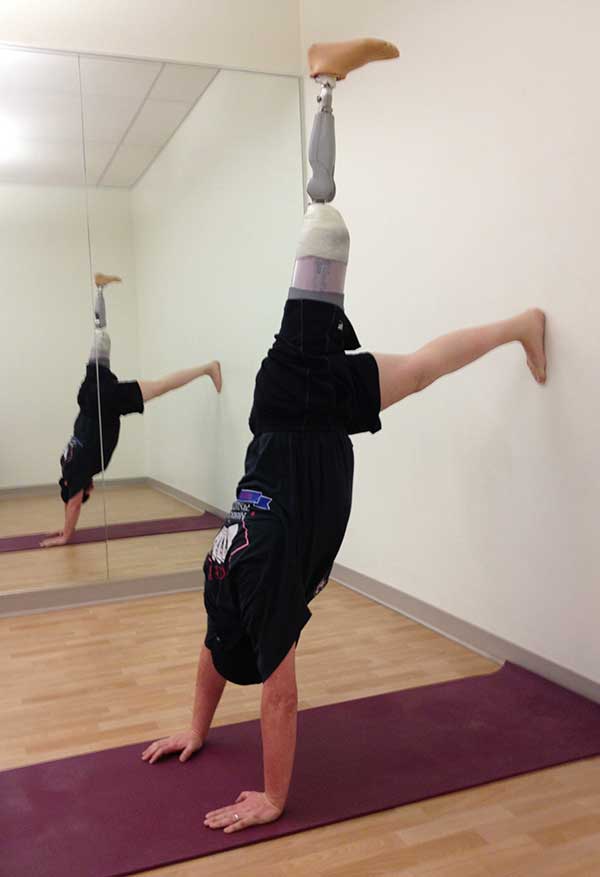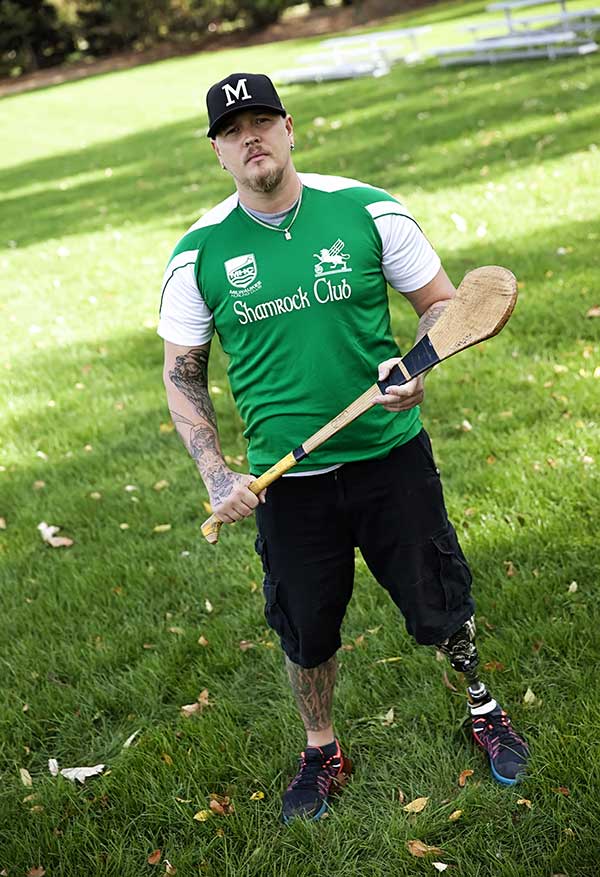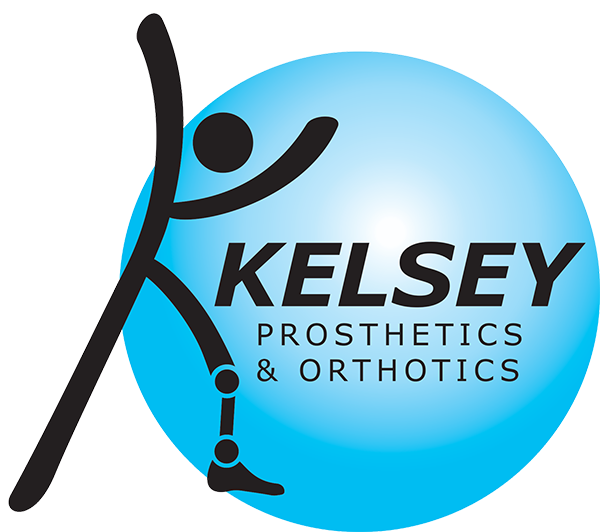Prosthetics in Wisconsin
New Amputees
As a candidate for amputation or as a recent amputee you probably have a lot of questions. There are no set guidelines that will fit every individual situation, but there are some generalities that apply. Following here is a guideline of what an amputee might expect during the first twelve months.
What to Expect in Months One to 12
Following your amputation your residual limb will start the physical healing processes and you will need to spend some time actively healing the psychological aspects of the transformation. Depending on how fast your limb heals, you should expect to have your stitches/staples removed within 3 to 4 weeks of your surgery. You will start pre-prosthetic physical therapy soon after your amputation. We recommend that you start this as early as possible and do as much as you can on a daily basis. It will make everything easier for you in the long run. This therapy involves working on your upper body strength and strengthing in your leg muscles. You will also be working your lower limbs to maintain a good range of motion in your hips and knees. You can help desensitize your residual limb by rubbing it and manually moving the tissue with your hands. This loosens any scar tissue that might develop inside your limb. You will meet your prosthetist multiple times during the first month. First for a consultation/evaluation and then to be fitted with a “stump shrinker” which is an elastic stocking that will help shape your residual limb for prosthetic fitting. This will be the first of several “shrinkers” that you will use. As you heal the residual limb will change and the “shrinker” will be adjusted accordingly.
When your incision has healed your stitches will been removed. Your doctor will provide a prescription for a preparatory prosthesis. This is a temporary prosthesis that will get you up and used to the feeling of wearing a prosthetic device. You will meet with your prosthetist to be measured and “cast.” Depending on how your prosthetist works, he or she will either cast your residual limb or create a digital image of it by scanning or taking pictures of it. At KPO we use the casting method to create the optimum fit. Your prosthetist will then create a positive model of your limb and it will be used to create a test socket, also known as a diagnostic socket, to make sure that your limb will fit properly. In other words, the prosthetist will have a mold of your limb and it will use it to make the socket that your limb will eventually use. Ultimately, a perfect socket that fits the mold of your residual limb will be created. You will then see your prosthetist for a test fitting to see how the socket feels on you. This could be one visit or many. Your residual limb may have changed since your last visit and some adjustments may need to be made. At KPO we have on site manufacturing facilities and can make many small adjustments while you wait. Some prosthetist must send their fabricating out to a third party and you will need to return for multiple visits to get the perfect fit. Tell your prosthetist if you have any uncomfortableness at all. This socket is your link to your new leg and will be used to create your final prosthesis. Make sure you are totally happy with the fit. Once a diagnostic socket is deemed to fit “comfortably,” it will be used to manufacture a preparatory socket. That socket will be inserted into what will become your first prosthesis. Adjustments to the prosthesis may be required during the first month or two that you wear it as you get used to using it. After you are fitted with your first prosthesis, your doctor will provide a prescription for physical therapy. You will see a physical therapist two to three times a week. These sessions are important because they will help you develop good habits as you learn to walk with your prosthesis. Bad habits can lead to back pain, leg pain, blisters, and a slew of other issues, so even if you’re feeling confident go to to therapy. It will be worth it on the long run. You will start walking using a walker and as you gain strength, learn to balance, and build up your endurance and confidence, you will walk on your own again. Then if you want, dance, swim, run, climb, anything.
As you wear your prosthesis your residual limb will go through changes. This is usually volume loss. You will compensate for this be wearing additional padding to keep the fit secure. You don’t want your prosthesis moving around on the end of your stump. This can cause blisters that can become infected. You will see your prosthetist on a monthly or bimonthly basis during this time if everything is going well. If your stump gets a lot smaller you might need a new socket. If this is the case you will go through the same process of casting and test fitting that you did before. Don’t be alarmed if this situation occurs. It is completely normal, it just doesn’t happen to everyone. If you do get a new socket you should remain vigilant in looking for a comfortable fit. The new socket may not feel like the old one did, but overall comfort and a snug fit are what you’re looking for. Around this time you will determine if you need to continue with physical therapy. We recommend that you go until you feel 100% confident in your abilities.
By now your residual limb should have stopped shrinking and will look like it will for the foreseeable future. Most likely your preparatory socket will no longer fit tightly your physician will prescribe for you be fitted with a definitive prosthesis. This will be your final limb. The process will require test fitting again and additional visits to your prosthetist before a new laminated socket is fabricated. Your prosthetist will also incorporate componentry into your definitive prosthesis that matches your current and/or potential level of activity. Here’s where you choose a cool C limb if you want to run and actively do sports. If you just want a nice walk with your dogs there are choices for that as well. You may still need an assistive device, such as a walker or a cane, for safety, depending on your overall health and confidence. Do what feels comfortable to you. Incorporating a prosthesis into your life is an individual process and you are in charge. Your prosthetist is there to help and will use their expertise to create the prosthesis that will serve you, and your lifestyle for the rest of your life.
You will see your prosthetist many times during your first year as an amputee, perhaps as many as 20 visits, if not more. Fitting a prosthesis is a custom process, which includes many adjustments as your residual limb heals and you progress from a preparatory to definitive prosthesis. We want you to be comfortable with your prosthetists and always feel like you can ask questions. At Kelsey, we want you to remember, we are here for you. If you are a new amputee or looking for another opinion, please call our office at (414) 282-3100 to schedule a free 30 minute evaluation.
